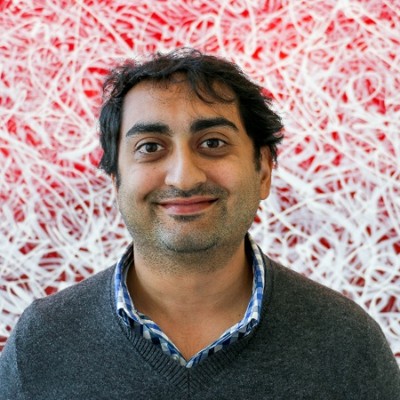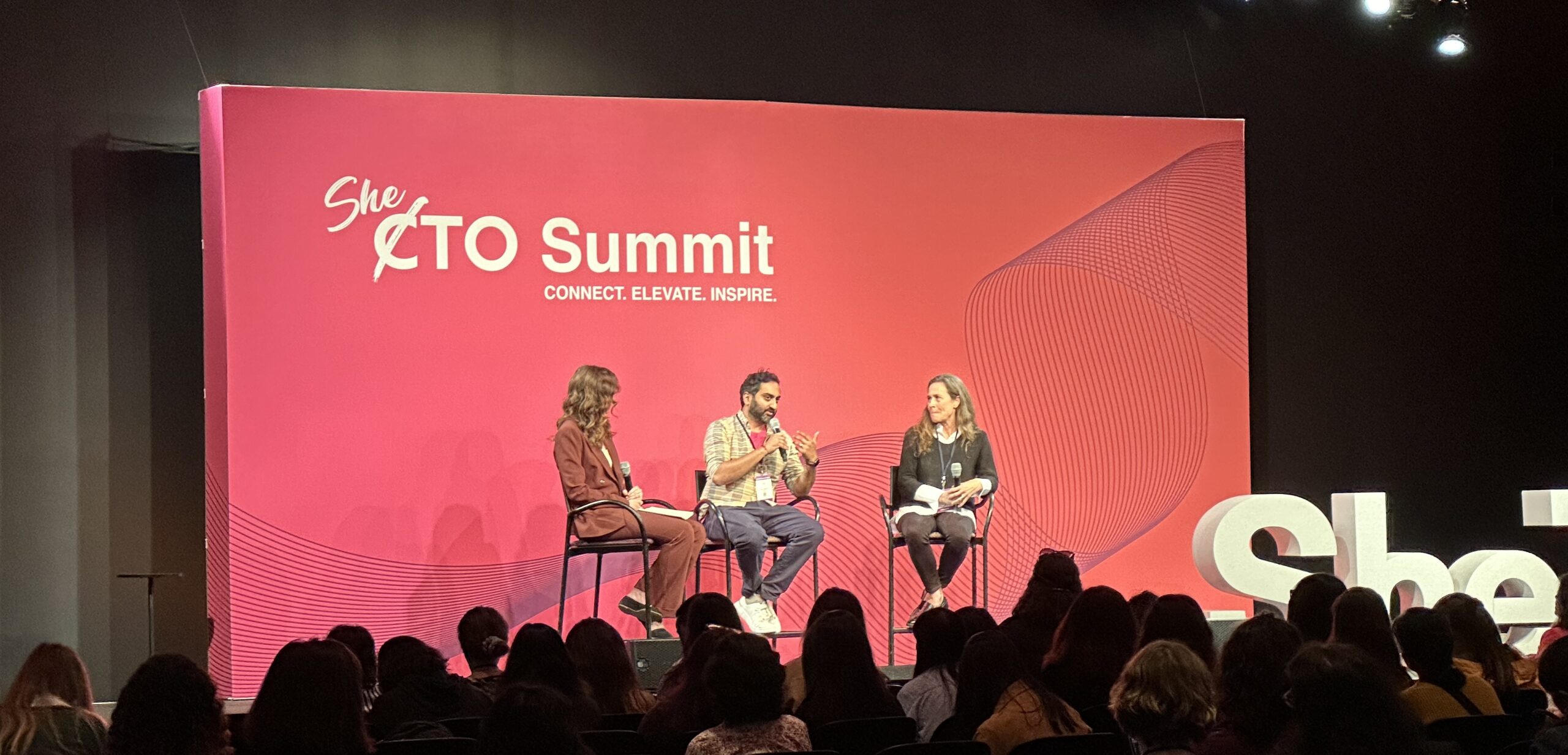In August, Allstacks announced their Series A funding round, raising $10M to equip engineering teams with the data they need in order to make strategic business decisions. This funding round was led by Quadri Ventures, alongside M12, Microsoft’s Venture Fund, and First Rays Venture Partners.
In this edition of Founders Feature, we sat down with Hersh Tapadia, Co-Founder and CEO of Allstacks, to learn more about what Allstacks is accomplishing as a valuable software development tool, his unique path as a founder and the lessons he’s learned along the way about building a strong, effective team. Here’s what he shared with us:
Can you tell us a bit about your background and how it led you to this venture?

Hersh: I studied electrical engineering and biomedical engineering at North Carolina State University and Duke University, respectively, and started my career working at IBM as a software engineer and later as a QA engineer. I felt disconnected from what was going on in the business, however, and I never could quite center my work on what made IBM successful as a company. Seeking something different, I got the opportunity to join a small but rapidly growing startup that was building signal-processing equipment for various defense applications. I got to experience hyper growth and was enamored of how effective and centered our team was.
Later, I founded a medical device company that leveraged computer vision to diagnose TB infections. That company was quickly acquired by a spinout of Johnson & Johnson that was developing computer vision based supply chain security software. Here, running the engineering and product teams, we developed incredibly innovative technology. Still, I always struggled to communicate how effective we were (or weren’t) in developing software, a problem that was further underscored when trying to translate software to healthcare.
My CTO, Jeremy, and I marveled at all the data we had access to, and yet no one had cracked the code on how to communicate software development outcomes to the rest of the business. Our engineering training can be myopic, and often, this “thinking in a vacuum” left us disillusioned with the value we create in our R&D organizations. Later, we met Adam, our third co-founder and CPO, who had been working with large enterprises trying to “transform” into modern engineering and product cultures but struggled to make sense of enterprise product consulting engagements devoid of any data demonstrating that they were getting better at delivering value. Answering the question, “Are we better off now than before?” was nearly impossible.
As we interviewed over 200 engineering leaders, we saw everyone facing similar challenges. Leaders struggled to find their voice in an organization when they couldn’t come equipped with data demonstrating their decision-making processes and the outcomes they were creating. But, perhaps for the first time, we could gather data without interrupting developers and help organizations improve how they deliver software to the market and value to their customers.
Ultimately, Allstacks helps you discover where your organization is investing its time. How that time aligns with critical business goals and what distractions are diluting focus. We help you understand if your team’s time is being well spent or if it’s plagued by process friction that keeps critical features from being delivered; and finally, we help identify tactical daily actions that teams can take to get their time back.
What sets you apart from your competitors?
Hersh: We’ve uniquely developed Allstacks to be enterprise-ready to scale from hundreds to tens of thousands of developers in an organization. To realize this, we’ve developed a solution that can adapt to all workflows, development methodologies, and metrics frameworks without asking our customers to rebuild their underlying data systems.
Unlike our competitors, who require you to change and homogenize your software development lifecycle (SDLC) processes to make their tool successful, Allstacks adapts to your heterogeneous tools and engineering workflows so we can make your organization successful.
We’re particularly proud of our level of integration in the Microsoft ecosystem with Azure DevOps, Github, and the Azure Marketplace and our ability to harmonize data across any toolchain. Many of our most successful customers leverage multi-vendor tooling, i.e. Azure DevOps and Jira, in the same organization.
With Allstacks, our customers can step beyond one-size-fits-all metrics and take a nuanced look at topics like the ROI of Coding Copilots, not just how much more code is being written but whether it is effective, saving time, and what part of the SDLC it should be deployed against.
What do you wish you had known before starting your company?
Hersh: In many ways, all the things you don’t know are what makes starting a company magical. You’re not trapped by preconceived notions of the right thing to do or what is possible. Often, you solve problems that others have written off simply because you didn’t know you “weren’t supposed to solve them.”
That being said, an interesting observation over the last few years is the impact of the macroeconomic environment on your success as a startup. This goes beyond simple capital availability to fund the business. The way organizations make decisions in a high-cost-of-capital environment versus a low-cost-of-capital environment is fundamentally different, and their motivations for what problems they solve and how they solve them are entirely different. In a low-cost-of-capital environment, businesses are more likely to invest at the fringes of their business to try to uncover orders of magnitude value creation even if the risk of failure is high. This filters down into staffing, purchasing solutions, and how they measure ROI. But in a high-cost environment, focus on core lines of business with strong economic metrics are paramount.
Knowing not just what value you create but in which environment that value is more salient is critical.
Can you share an example of how your team has collaborated to solve a tough problem?
Hersh: Our team has a tight-knit and highly empathetic culture. So much so that we suffered a unique dysfunction for a period of time in that, the team cared so much about each other’s workload that they would try to insulate each other from adding more to their plate. For example, the customer service (CS) team would develop workarounds for features and functionality to help the engineering team not lose focus on customer requests, and the engineering team would try to overly develop features to protect the CS team from the same fate.
Once we realized this behavior, we had to resolve it quickly, and it started with having the teams work with each other more directly. A communication challenge between non-technical and technical teams is that it’s often unclear when a request is large or small. Teaching the teams not to self-censor and just to be open about what realities they are experiencing was step one.
Then we established an exchange program within the company. For example, we’d have developers sit in on customer calls and product-leading select customer implementations, ultimately creating empathy for each other’s roles but also critical awareness of the nature of the jobs. In turn, CS knew better how to engage with Product/Engineering to readily communicate customer challenges, and Product/Engineering was able to understand the customer experience more intimately and weave those learnings into their microdecisions in developing products.
I’m proud to share that this wasn’t a one-and-done project and is an ongoing part of our culture.
What do you do to stay motivated and inspired?
Hersh: I’ve always found value in creative outlets that allow me to briefly separate from day-to-day founder life. Ultimately, these brief changes of focus allow your subconscious mind to process whatever is built up, and I find that in the work, many new ideas flourish. For me, there are three places I like to dive into: cooking, woodworking, and photography. The former two because of the hands-on tactile nature of it; at the end I’ve produced some product that I can hold, feel, and, with cooking, taste!
With photography, I find it’s an opportunity not just to try to shape different perspectives (i.e. literally framing what I see with my eyes versus what I want others to see in the frame), but also how to make certain details prominent that might be lost at first glance. I particularly like black-and-white photography because how you align specific colors to black or white can dramatically change the feeling of the image. It’s a narrative-shaping device.
My biggest inspiration is my young daughter; she is 16 months old now, and watching her learn to interface with the world around her and discover new interactions, interests, and joys in life is incredibly gratifying. It’s a reminder of the impact that new experiences can have on a person; for her, everything is new, and watching her process these moments is remarkable.
Can you recommend any books, podcasts, or other resources that have helped you on your entrepreneurial journey?
Hersh: I really enjoyed Boys in the Boat by Daniel James Brown. It’s about the unlikely heroes of the University of Washington Crew team that goes on to win gold at the 1936 Berlin Olympics, a classic underdog story. If you like history, similar to other books like Devil in the White City, it overlays Nazi Germany’s attempts at leveraging the Olympics to gain legitimacy on the global political stage.
A large part of the book deals with team construction and team dynamics. Understanding the motivations behind people’s behaviors and how they may be constructive or destructive to the overall team success, not just at a surface level but also getting to know each human on the team and the core drivers of their behavior.
The nuance and context the main character, the coach, gives to understanding each person on his team and what could make them successful together reminds me of what we are trying to accomplish with Allstacks.
